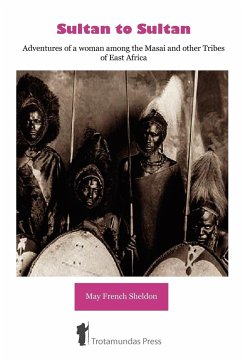In the last half of the nineteenth century, Africa was still the 'dark continent,' with large areas of its territory unmapped. Tribes in many regions had not been subdued, and from their initial contacts with Arab slavers and Western explorers, they were often hostile to foreigners. Diseases against which outsiders had no immunities had been named but not cured. Roads and even trails were almost nonexistent. But these very obstacles made Africa an irresistible challenge to adventurers. Most, of course, were men, but one of the more remarkable, unconventional, and brave of these explorers was a middle-aged American woman by the name of May French Sheldon, who in 1891 planned and led an expedition to East Africa. For her it was not enough just to follow the trail of the male explorers. Her aim was to prove that women could do whatever men could do. May contributed learned papers on little-known topics such as the navigation of Lake Chala, and she made some of the first ethnographic studies of African women and children. It is the latter work which today stands out as a major accomplishment. Along with her contemporary Mary Kingsley, Sheldon was among the first white people to describe Africans and African culture sympathetically.








